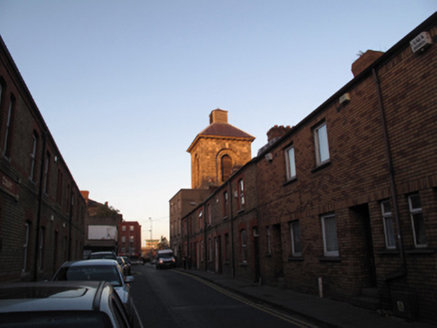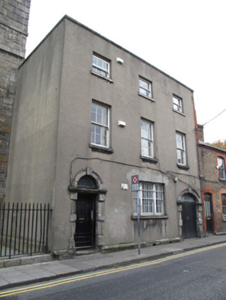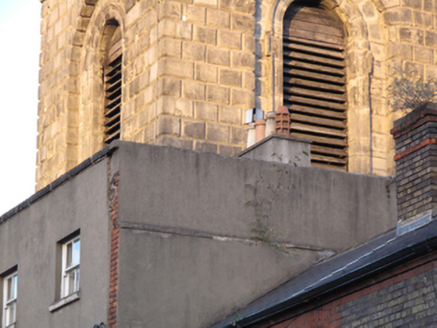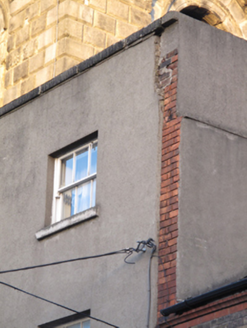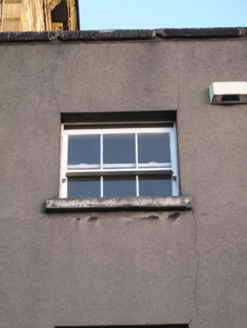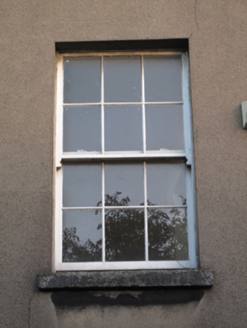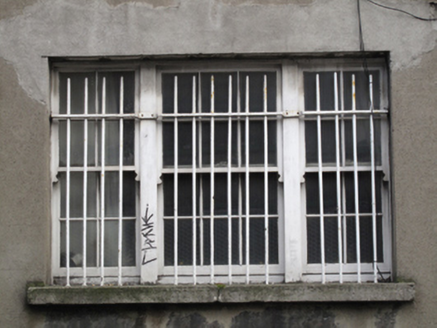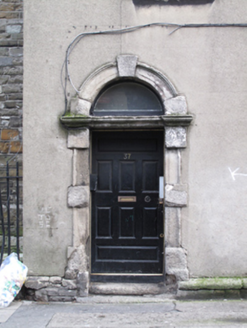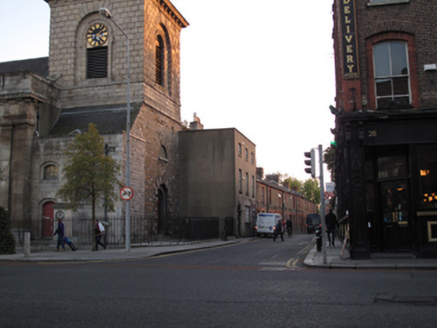Survey Data
Reg No
50081089
Rating
Regional
Categories of Special Interest
Architectural, Artistic, Social
Previous Name
Saint Catherine's Church of Ireland Church/Meath Charitable Loan Society
Original Use
House
Historical Use
Sexton's house
In Use As
House
Date
1760 - 1780
Coordinates
314509, 233865
Date Recorded
11/11/2013
Date Updated
--/--/--
Description
Attached three-bay three-story house, built c.1770. Formerly in use as sexton's house. Flat roof with rendered chimneystack and clay chimney pots, hidden behind rendered parapet having granite coping to front (west) and north elevations, having cast-iron rainwater goods. Lined-and-ruled rendered walls, with red brick exposed to south of façade, having rendered plinth course with granite coping. Square-headed window openings having granite sills and timber sash windows, three-over-three pane to second floor to front, and six-over-six pane to first floor and to rear (east) elevation. Tripartite window to ground floor to front, having granite sills, timber mullions, six-over-six pane timber sash window flanked by four-over-four pane timber sash windows, and wrought-iron railings. Round-headed door opening to front with carved granite Gibbsian surround, timber panelled door, plain fanlight and granite step. Carriage arch to front having carved granite Gibbsian surround, plain fanlight and double-leaf timber battened door. Square-headed door opening to rear, with recent glazed door.
Appraisal
This house forms part of an interesting ecclesiastical group with the attached Saint Catherine’s Church of Ireland Church and the associated graveyard to the rear. Although a church stood on St Catherine's site since the late twelfth century, the current church was erected c.1765 and this house may have been constructed at the same time. It is of historical interest due to its use as the office of the Meath Charitable Loan Society, founded in 1807 to lend small sums to local people of modest means. As the house of the sexton, who was responsible for the maintenance of the church buildings, it was of some social importance in the parish. Due to its form and imposing scale, it makes a formidable impression on the streetscape. Its façade is enhanced by carved granite Gibbsian surrounds, which provide artistic and technical interest, and attest to the artisanship employed in the construction of the building. Timber sash windows, which are retained throughout, lend a patina of age. Thom’s Directory of 1850 lists William Singleton as the Secretary of the Meath Charitable Loan Society Office, and that of 1862 lists the sexton as Andrew Hamilton.
